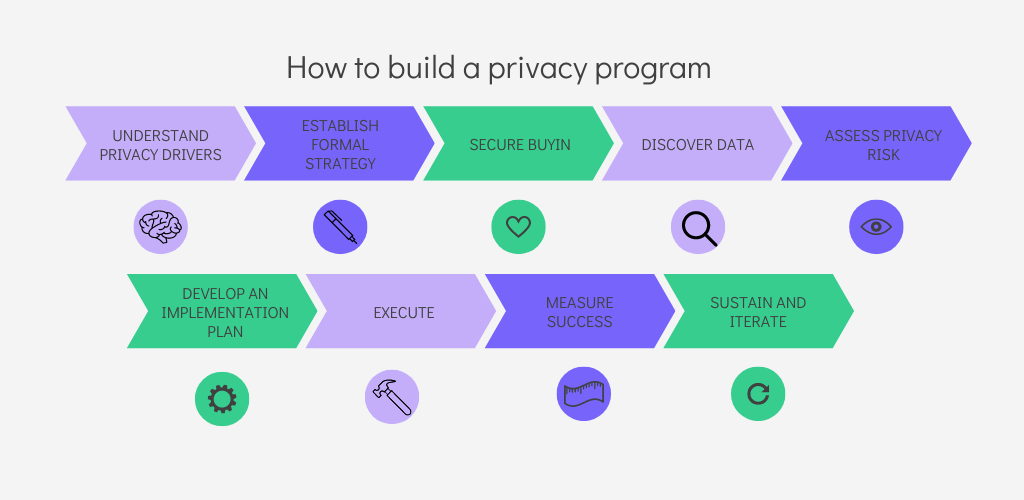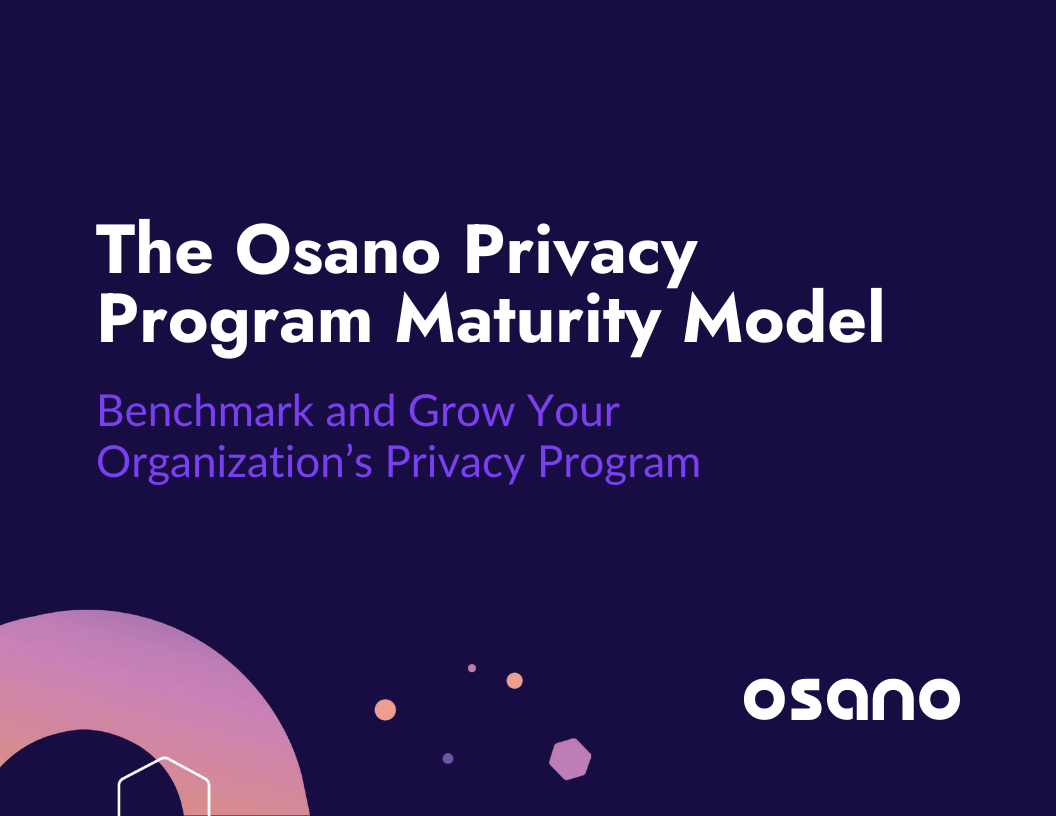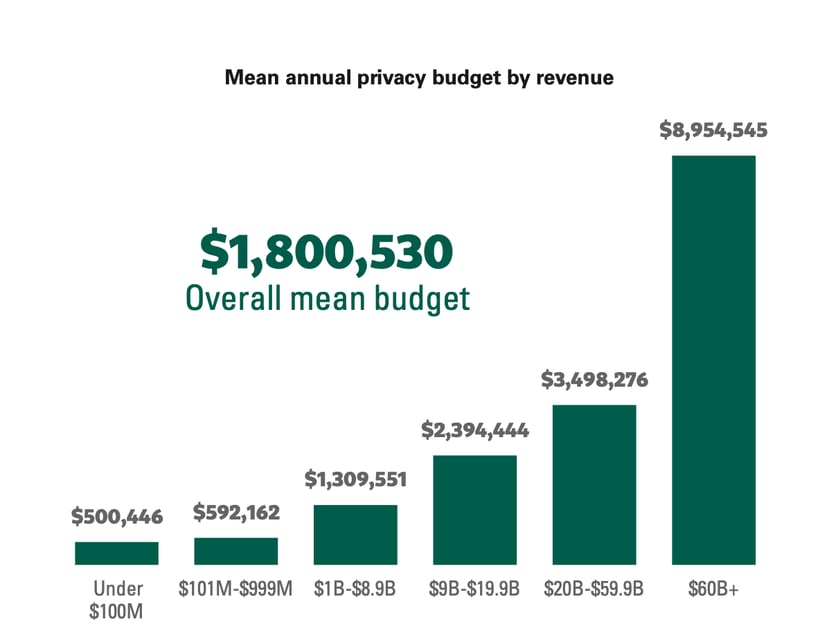How do you build an effective privacy program?
As we alluded to above, data privacy programs will look different at each organization, but there are some basic steps you can follow to establish a program that fits your organization.

1. Understand privacy drivers
Before you do anything, it’s essential to learn all you can about the drivers behind your need for a data privacy program. Understand the applicable data privacy laws and regulations that apply to your operations, such as the GDPR or CCPA/CPRA. There might be other reasons why your organization needs a privacy program—such as reducing the risk of a data breach, building trust with your customers, and so on. Study these drivers as well and consider how they’ll shape your privacy program.
2. Establish a formal strategy
Once you understand the specific requirements that your privacy drivers have, you can review the guidance in this and other resources on building a data privacy program to establish a formal strategy. Don't stress about having all of the answers at this point; your plan might involve a few steps where the plan is to investigate and plan further. Even if there are still gaps like these, it’s important to show that you have a direction and a strategy to move ahead—this is especially important for the next step.
3. Secure organizational buy-in
You need commitment from the top levels of your organization in order to implement your privacy program. They’re going to want to know what the organization stands to gain, how this will impact operations, how it’ll impact the budget, and so on. Most non-privacy professionals underestimate the amount of effort it takes to become compliant. Laying out the steps will help clarify and secure the resources you need to be successful from the start.
Furthermore, getting organizational buy-in will help you be more effective once your privacy program is live. If the whole organization understands that privacy is something they need to factor into their day-to-day responsibilities—such as team leads understanding the need to collaborate on DSARs or R&D understanding privacy-by-design principles—you’ll be more efficient and better situated to scale.
4. Discover your data and conduct a RoPA
Most businesses haven’t had a reason to identify and track the personal data they collect until recently; as a result, many organizations have consumer data spread across multiple systems and databases. Discovering all of this data, classifying it, recording where it’s going and where it came from, and more is crucial for all downstream compliance activities. If you don’t know about it, you can’t do anything about it.
The GDPR refers to the classification and recording process as a record of processing activities (RoPA). Even if you aren’t subject to the GDPR, following its RoPA guidelines is a good approach to this process.
5. Conduct a privacy risk assessment
Given the privacy drivers at play in your organization and the current state of your data processing activities, where are you currently exposed to significant risk? You might discover that your security measures are not applied evenly across the organization, or that you aren’t able to quickly process requests to opt out of data collection. Flag these risk areas so you can prioritize controls to mitigate them.
6. Establish goals and develop an implementation plan
With a full sense of the scope of your privacy drivers, data processing activities, and privacy risks, now you can identify the specific steps you need to take. That might involve identifying a DSAR solution, revamping how your website secures consent, formalizing a vendor assessment process, and more. Almost certainly, you’ll have multiple goals—it's important to prioritize based on the relevant regulations and your organization’s biggest gaps
As part of this, you’ll want to develop or update your privacy policy. Note that you may need a privacy policy for both customers as well as employees. Establishing your policies at this stage makes sense since you won’t have the full picture of your data processing activities before this step, and drafting a policy now forces you to consider what the day-to-day realities of your data processing activities will be going forward. As a result, you’ll have to account for the specifics of how your organization processes data.
7. Execute your implementation plan
Once you have your plan, it’s time to put it into practice.
You’ll need to implement technical and organizational measures to protect personal data, including encryption, access controls, consent management, vendor onboarding processes, incident response plans, and more. Make sure you include education and training in this step—privacy is not possible without collaboration and buy-in from across the organization, so you’ll need to ensure your coworkers are equipped with the resources they need to comply with policies and procedures.
8. Measure success
After implementing the various technical and organizational measures contained in your data privacy program plan, you’ll want to see whether they work.
Can you respond to a DSAR within the 30 days required by law? Does vendor onboarding take too long? Do your colleagues feel burdened and confused by the new data privacy considerations they have to take into account? Measure and monitor these and other data privacy metrics to identify whether you’ve been successful and how you can improve.
9. Sustain and iterate
Data privacy laws and regulations are constantly evolving. Organizations need to stay up to date with the latest developments and changes in the legal landscape to ensure their data privacy program is compliant.
Not only will the laws and regulations change, but your internal processes will change too. You’ll collect and process data in new ways that may require data privacy impact assessments (DPIAs) or other evaluations.
And most significantly, your business will hopefully grow! As you grow larger, your data privacy program will need to grow and evolve commensurately.
Common data privacy program frameworks
Following the above steps is a good start, but you might be looking for a greater level of detail. In that case, you may want to study one of the existing privacy program frameworks.
Here are some frameworks you might consider adopting at your organization:
- The NIST Privacy Framework, which is broadly considered the gold standard of privacy frameworks. It provides a set of guidelines for privacy risk management and control and helps organizations to identify, assess, and manage privacy risks.
- ISO/IEC 29100: This framework provides a set of guidelines for protecting personal data in the development and deployment of information and communication technologies (ICT).
- ISACA’s COBIT framework, which is mainly focused on IT governance but does provide overlapping benefits for compliance and privacy programs.
- IACPA’s Generally Accepted Privacy Principles (GAPP) and Privacy Management Framework (PMF), which were developed to help management develop and measure the success of privacy programs.
The key to successful data privacy programs
The activities we recommend in this article are significant, but they’re just the tip of the iceberg. Educating and training your colleagues on privacy responsibilities is an entire initiative in and of itself, but it's just one component of a comprehensive data privacy program.
That’s why it’s essential to make use of the data privacy tools that are available to you. Non-privacy professionals might think that it's feasible to build the necessary infrastructure for data privacy compliance in-house, but often, this assumption doesn’t take into account the many complexities that data privacy compliance poses. In-house development also commits you to maintenance and updates every time the law changes—which it does often.
Without external support, you won’t have the time or resources it takes to develop a data privacy program that truly fits your organization. Osano can be the partner that automates the most tedious compliance activities like consent management, vendor assessments, DSAR workflow, and more, leaving you with time to tend to the unique needs of your organization.
Osano Privacy Program Maturity Model
Score and evaluate your privacy program's operational efficiency with the Osano Privacy Program Maturity Model. With this model, you'll pinpoint gaps, identify next steps, and ultimately grow your privacy program's maturity.
Download Your Copy
.webp?width=1220&height=1090&name=Osano-guarantee-seal%20(1).webp)





